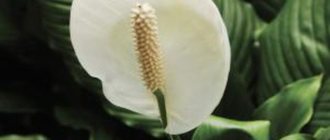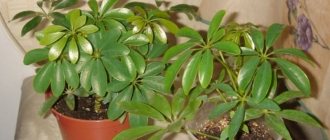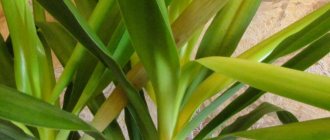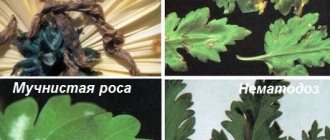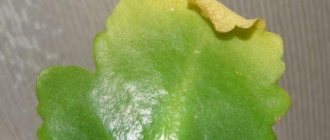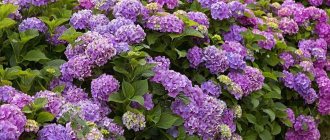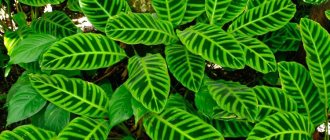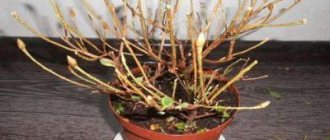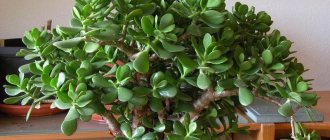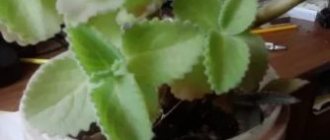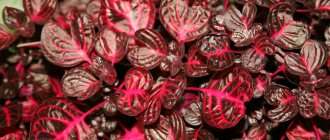What does a mango look like?
In nature, mango (Mangifera indica) is a powerful evergreen tree that grows up to 40 m in height. The crown is wide, spreading, 10–15 m in diameter. Its homeland is the tropics of Southeast Asia. It is especially common in India, Thailand, Vietnam, and Myanmar. Nowadays, extensive plantations exist in the southern states of the USA, Mexico, the Caribbean and Central America, and Australia. Humanity has been growing mangoes for over 4,000 years. In its homeland it is called “fruit of the gods”, “great fruit”, and also “Asian apple”. According to legend, mangoes are a wedding gift from the god Shiva to his future wife Sati.
In nature, a mango tree can grow up to 40 m in height
The mango tree grows quite quickly, but you have to wait 10–15 years for fruiting. But its productive period is 250–300 years.
Mango plantations exist in many countries with tropical climates
It is not possible to grow mangoes in open ground in Russia. The climate and weather conditions are radically different from what the plant is accustomed to. But amateur flower growers have successfully “domesticated” the crop and even manage to get a harvest in “captivity.” In such conditions, the height of the tree is usually limited to 1.5–2 m.
Mango tree can bear fruit for 300 years
Mango leaves are long and narrow, lancet-shaped. The front side is painted bright green and has a glossy shine. The reverse side is lighter and matte. Young leaves have a yellowish, pinkish or reddish tint. At first they look very sluggish, lifeless. Don’t be surprised, this is the norm for the plant, and not some kind of exotic disease. In their homeland they are called “shawl leaves,” hinting that they look like laundry hung out to dry.
Young mango leaves are colored in different shades of reddish-yellow and pinkish - this is the norm for the plant
The juice of the leaves is poisonous. It can cause allergies, cause a rash, and redness of the skin. Therefore, any mango pruning work should only be done with gloves. The place for the plant pot should be chosen so that it is out of the reach of children and pets.
Mango blooms in early spring. The inflorescences consist of many small yellowish, pinkish or pale red flowers and are shaped like a raceme or panicle. They are very long, up to 30–40 cm. Each has at least several hundred flowers, often the number reaches a thousand. They emit a pleasant aroma, a bit like the smell of lilies.
Mango blooms very profusely; one inflorescence can contain up to a thousand flowers.
Video: what a mango tree looks like
Description of fruits
It takes 4–6 months for the fruit to ripen. The appearance of the fruit depends on the variety. There are also small mangoes, slightly larger than a plum, and “record holders” weighing more than 2 kg. The average weight of the fruit is 200–400 g, length varies from 5 to 22 cm. The skin is colored in different colors - from greenish and lime to dark scarlet and reddish brown, including all shades of yellow. Combinations of all three colors are often found. The skin is dense, matte, smooth to the touch, covered with a waxy coating. For ripe fruits, when pressed, it moves, but does not penetrate deeply.
The appearance and size of mango fruit depends on the plant variety
The pulp is bright, saffron, very soft, juicy and sweet, the taste is somewhat reminiscent of a mixture of apricot, peach, pineapple and melon, with a spicy aroma in which notes of lemon and roses can be discerned. Each fruit contains one large seed, hard and ribbed to the touch.
Mango pulp is very juicy and incredibly tasty, has a unique aroma
“Natural” mango fruits do not smell very pleasant. The smell evokes associations with mold, rot, even rotten meat. Many people even develop allergies to this “aroma”. This is explained by the fact that in nature, mangoes are most often pollinated by bats. They spread its seeds. But fortunately, the vast majority of modern varieties bred by breeders are devoid of this unpleasant feature.
Beneficial properties of mango
Mango is not only very tasty, but also healthy. The fruits are valued for their high content of essential amino acids, fiber, unsaturated fatty acids, flavonoids, pectin, vitamins B, A, D and E, as well as for their low calorie content. 100 g contains only 66 kcal, so mango can pleasantly diversify any diet.
Even small mango trees grown at home can produce a bountiful harvest.
In folk medicine, especially in India, mango is used very widely. The fruits are used to improve immunity, to combat migraines and stress, to relieve nervous tension, and also as an antipyretic and anti-inflammatory agent. It is also believed that regular consumption of mangoes is an effective prevention of the development of tumors, including malignant ones. Previously, it was recommended to eat them in order to avoid contracting cholera and plague.
Mango leaf infusion has been scientifically proven to have antibacterial properties. It can be used instead of mouth rinses. It is also recommended to drink it for diabetes of any type to avoid retinal detachment and normalize blood pressure.
There are also contraindications. Mango should not be combined with alcohol or abused if you do not want to develop persistent stomach and intestinal upset. Those who are prone to allergic reactions should try the fruits carefully - skin rashes, redness and swelling of the lips are possible. It is recommended to cool the mango before serving. Thanks to this, the specific oiliness of the pulp, which not everyone likes, is softened.
Video: health benefits of mango
How to plant mangoes correctly
In the homeland of mangoes, the temperature remains virtually unchanged throughout the year. The climate is also characterized by high humidity. This must be taken into account when choosing a location for the plant. And also the fact that it requires long daylight hours. In most of Russia, natural light will not be enough, so you will have to use ordinary fluorescent or special phytolamps, extending the daylight hours to 14–16 hours.
Mangoes are placed near a window facing south or southeast. If the tree was purchased from a special nursery or store, there is no need to replant it immediately. It is better to give him 2-3 weeks to adapt to new conditions.
When growing mangoes at home, you need to provide the plant with 14–16 hours of daylight.
The soil
It does not make any special demands on the quality of the soil, but it is desirable that it be light and loose. The only prerequisite is that the substrate must be sufficiently acidic. You can purchase special soil for azaleas, gardenias, and hydrangeas in the store, or annually add peat to the soil, add a few drops of apple cider vinegar or citric acid crystals to the water for irrigation.
The soil for growing mangoes should be acidic (pH 4.0–5.5), any store-bought substrate is suitable for plants that prefer similar soil
Experienced gardeners mix the soil themselves. The simplest option is peat chips, ordinary garden soil and coarse river sand (1:2:1). The latter can be replaced with any baking powder - perlite, vermiculite, dried sphagnum moss or coconut fiber.
The root system of mangoes is powerful and developed. In nature, its roots go 6–10 m into the soil. Therefore, you will need a fairly large pot or even a tub. It is advisable that the container be ceramic or wooden - natural materials allow air to pass through. It is good if the pot has a thick bottom, otherwise the mango roots may simply break through it.
The mango tree has a powerful root system, so the pot for the plant must be massive and stable, with a thick bottom
The process of planting and replanting a plant
The best time to plant and replant mangoes is late spring or early summer. There is no need to carry out the procedure too often: for an adult plant, once every 3–4 years is enough. When it is no longer physically possible to replant a tree due to its size, they limit themselves to removing the top 5–7 cm of soil and replacing it with fresh substrate.
There is nothing complicated about the transplant itself:
- The mango is removed from the container along with a lump of earth. This will be easier to do if you water it thoroughly about half an hour beforehand.
- The new pot is filled with soil about a third, not forgetting the drainage layer at the bottom.
- The tree is transferred to another container and covered with soil. Its base should be flush with the soil surface or slightly lower. There is no need to compact the soil too much; mango prefers a loose substrate.
- Then the plant is watered moderately and transferred to partial shade for 3–5 days or otherwise protected from direct sunlight.
The mango tree is replanted as it grows; for adult plants, the top layer of soil is only changed
Why do mango leaves wither and dry out? Help save the tree!
This is what I did as a result - I made holes in all the pots with a hot nail along the perimeter, carefully removed the top layer of soil, slowed down watering - now only spraying until the soil dries out completely, but it was clearly over-moistened and even after a week it is still wet at the same time that the pots are perforated and the top layer of soil is removed! The most interesting and misleading thing in my opinion is that when it is flooded, the plant continues to actively respond to watering - that is, already when the soil is flooded, when you water it, it produces growths, and then after some time, continuing to produce increments, it begins to dry out the lower leaves and then middle and top! when you realize it, it may already be too late - this is how logic works - I water it and it grows, which means I also need to water it further and then oops and the leaves become brown and dry in two days ((the first one is more or less
first more or less
first more or less
first more or less
the first more or less red leaves always first hang or lie on the lower leaves, they begin to rise only when they start to turn green and increase in size!
the first more or less red leaves always first hang or lie on the lower leaves, they begin to rise only when they start to turn green and increase in size!
the first more or less red leaves always first hang or lie on the lower leaves, they begin to rise only when they start to turn green and increase in size!
the first more or less red leaves always first hang or lie on the lower leaves, they begin to rise only when they start to turn green and increase in size!
the first more or less red leaves always first hang or lie on the lower leaves, they begin to rise only when they start to turn green and increase in size!
the first more or less red leaves always first hang or lie on the lower leaves, they begin to rise only when they start to turn green and increase in size!
the first more or less red leaves always first hang or lie on the lower leaves, they begin to rise only when they start to turn green and increase in size!
the first more or less red leaves always first hang or lie on the lower leaves, they begin to rise only when they start to turn green and increase in size!
the first more or less red leaves always first hang or lie on the lower leaves, they begin to rise only when they start to turn green and increase in size!
the first more or less red leaves always first hang or lie on the lower leaves, they begin to rise only when they start to turn green and increase in size!
the first more or less red leaves always first hang or lie on the lower leaves, they begin to rise only when they start to turn green and increase in size!
the first more or less red leaves always first hang or lie on the lower leaves, they begin to rise only when they start to turn green and increase in size!
the first more or less red leaves always first hang or lie on the lower leaves, they begin to rise only when they start to turn green and increase in size!
the first more or less red leaves always first hang or lie on the lower leaves, they begin to rise only when they start to turn green and increase in size!
the first more or less red leaves always first hang or lie on the lower leaves, they begin to rise only when they start to turn green and increase in size!
Recommendations for caring for mangoes
If the mango is provided with optimal conditions, the plant does not need particularly careful care. The most important thing for him is that there is enough light. When it is deficient, the tree weakens, its immunity decreases, and it becomes more susceptible to attacks by pathogens and pests.
Watering
Mango is a moisture-loving plant, but if you over-water it, the roots can rot. Therefore, the soil must be constantly kept slightly moist. Young trees under five years of age are especially sensitive to drying out. Their leaves immediately droop and begin to fall.
If the leaves of a young mango tree begin to dry out and fall off, the number of waterings should be increased.
Immediately after flowering, if fruits have set, watering is reduced to the minimum required. In the previous mode, it resumes only after the harvest. Usually once every 3-5 days is enough, but it depends on how warm it is outside. In extreme heat, daily watering may be required.
Use water only at room temperature and left to sit for at least a day. Mangoes are sprayed with it daily or at least once every 2-3 days. The plant prefers high (70% or more) air humidity, as in its native tropics. Special humidifier devices, wet moss, expanded clay, coconut fiber placed in the tray of the pot, as well as containers with cool water placed around the room or the company of other plants will help to provide it.
Top dressing
Mangoes definitely need fertilizers, but you shouldn’t be overzealous with them. Their excess in the soil provokes salinization, which, in turn, inhibits the development of the tree.
You can use both mineral and organic fertilizers. In the spring, before flowering, it is advisable to water the tree once every 12–15 days with a solution of complex fertilizer for citrus or palm trees or vermicompost. They contain enough nitrogen, which stimulates plants to actively form green mass.
After flowering, it is better to use organic fertilizers at the same frequency. An infusion of manure, bird droppings, nettle or dandelion leaves works well. Prepare it for 3–5 days in a container with a tightly closed lid; before use, dilute it with water in a ratio of 1:10 or 1:15 (if it is droppings). In mid-autumn, feeding is stopped.
The mango tree can be fed with any fertilizer for citrus fruits.
In addition to nitrogen, phosphorus and potassium, mango also needs other microelements. Therefore, 2–3 times per season, its leaves are sprayed with a solution of boric acid, copper sulfate and zinc sulfate (1–2 g per liter of water).
Tree pruning
Mango trees vary in size in nature. Therefore, trimming it is an absolutely necessary procedure, otherwise it simply will not fit into most modern apartments. As a rule, its height is limited to 1.5–2 m, but experienced gardeners even manage to form bonsai from mangoes.
Mangoes at home need to be trimmed; experienced gardeners even form bonsai from the tree
The crown of a mango, as a rule, is not too thick; it takes on a beautiful symmetrical shape with almost no effort on the part of the grower. You just need to remember that the fruits ripen at the ends of the branches, and cut off thin, deformed shoots that are growing downward or clearly stick out beyond the contours of the chosen configuration. They are cut off almost to the growth point, leaving “stumps” of 2–3 cm. At the same time, this will help thin out the crown if it is too thick near the trunk. Mango tolerates pruning well and recovers quickly after it. The best time for the procedure is autumn, 2-3 weeks after harvest (if there was one).
Back September, 2002
1640. Why do the tips of mango leaves dry out? Vitaly
Dry indoor air, dark and poor substrate. Or any of these factors.
1641. Hello, dear florist! I really need your advice. The fact is that the other day my husband gave me a ficus "Teneke" (3-color), a day later I replanted it, having previously removed the excess peat, placed drainage at the bottom, before that I sprinkled the roots with "Heteroauxin" for 40 minutes (as advised in store) and finally watered it, which should not have been done. In general, first 1 leaf fell, next. Another day, the stem itself withered, we managed (for now) to save 1 leaf and the top with an unopened leaf. I put the cutting in the water, I wait... and I hope. Please tell me what are my chances of keeping the gift and the chances of the ficus surviving? If it suddenly takes root, when and how best to replant? And the second question: I’m going to replant Yucca, do I need to remove the bag in which the roots are and how often do I need to spray the leaves? Thank you very much! Natasha
1. “Sprinkle with heteroauxin” is the same as taking half a kilo of aspirin at night. One tablet is dissolved in 3-5 liters of water. So it's not surprising that problems arose. If the plant does not die, it will be simply a miracle. 2. You should not tear apart the roots of the yucca. And it is better to use ordinary forest or garden soil with sand rather than purchased soil. There is no point in spraying this plant. It does not need high humidity. He needs the sun. And more.
1642. Why do the buds of the Chinese rose fall off? Maria
If the plant is Dutch, then this is completely normal. This is how the plant reacts to stress - transportation, poor store conditions, replanting (if you replanted it, of course). Normally, hibiscus begin to bloom only when they reach a fairly impressive size. Cuttings with buds sold in Holland - this will not be in the room.
1643. Zdrastvuite! Mne podarili CYCAS.revoluta(sadopalm) Ya sovsem neznau kak zanim uxajivat. On nachel chaxnut Listeki soxnut, zjemaursya i svarachivautsya. podskajite kak pravelno za nim uxajivat. Mojet dobavki nada kokie i obezatilno pro protiva pokazaniya. Mojet eto iza vodi ya polivala vodaprovodnoi.I where mojno prochest pro etot vid podrobnei… Zaranie sposibo za otvet! Djeni
Cicas or cycad - read here: https://www.lapshin.org/club/x-cicas.htm
1644. How to breed azalea Elena
Cuttings or seeds. Details here: https://www.lapshin.org/club/x-azalia.htm
1645. Hello, Peter. I was recently given a Gray Tellandsia. Please tell me how to care for it, what soil is best to use. Alina
Lots of information about tillandsias here: https://www.kleo.ru/Encyclopedia/flower/
1646. Please tell me how I can care for Gordenia? Are there any “tricks”? Thank you! Ariadne
The plant is called gardenia. Care here: https://www.lapshin.org/club/x-gardenia.htm
1647. Hello, Peter! Thank you very much for your answers. Please tell me how to care for bungevillea, I recently purchased a flowering shoot from my aunt at the market. Soon the flowers fell off. I haven't transplanted it yet. Hoya shot an arrow, and the leaf buds on it dried out and fell off, what should I do? Sveta
Care here: https://www.lapshin.org/club/x-bugen.htm
1648. I was given a wonderful plant MARANTA, but I don’t know how to care for it (what it likes, what it doesn’t). If you could tell me something, it would be very cool. Thank you in advance. Kartashova Olga
Care here: https://www.lapshin.org/club/x-marantha.htm
1649. How to care for pochypodium after transplantation? Thanks Alena
The plant is called pachypodium. Keep on a bright sunny windowsill. Water after the top layer of the substrate has dried.
To find information, you can use the site search:
| powered by FreeFind |
Return to list of questions
Mango grafting
Grafting is a method of propagation that is guaranteed to preserve all the varietal characteristics of the fruit characteristic of the donor plant. Grafted mangoes begin to bear fruit after 2–3 years. Until this time, it is better to remove the flowers on them so that the tree can form a developed crown.
Grafting is carried out in the second year of life, when the trunks of mango seedlings grown from seeds reach approximately the diameter of a pencil. The best time for the procedure is mid or late summer.
Grafting with cuttings
You can graft both a cutting (the tip of a shoot 10–15 cm long) and a separate growth bud (the so-called budding). In the first case, the top of the rootstock and the base of the cutting are cut at an angle, the cuts are combined and the entire structure is fixed with adhesive tape, electrical tape or a special grafting tape. You can also insert a rootstock cutting into a split in the scion.
Cuttings from fruit-bearing mango trees are grafted onto seedlings grown from seeds
Budding
For budding, you will need a growth bud, cut from a fruiting tree along with a “shield” of surrounding tissues about 2 mm thick and 1–2 cm in diameter. Cut it with a disinfected scalpel or razor blade, trying to touch it as little as possible in the process. Then the resulting “shield” is inserted into an X- or T-shaped cut on the bark of the rootstock seedling, wrapping the grafting site with polyethylene so that the bud itself remains outside.
For budding, take a growth bud from a fruiting tree, cut together with a shield of surrounding tissue about 2 mm thick.
The grafted seedling is covered with a plastic bag, with several holes made in it for ventilation, and transferred to the brightest and warmest place in the apartment. Leaves and shoots below the grafting site are removed only when it becomes clear that the procedure was successful.
How to save a flower: it bloomed beautifully, but suddenly withered, the leaves turned black (photo)?
First plant: Striped Aechmea = Aechmea fasciata of the Bromeliad family.
Like all Bromeliads, Aechmea blooms for a very long time, but only once in its life. Then the faded (mother) plant gives birth to children, which form around it and bloom in the 3-4th year of life. Children, like the mother plant itself, have an underdeveloped root system, which is why these plants are not grown in large pots and are rarely replanted. When replanting, the transshipment method is used to minimize damage to the root system.
Pure peat sold in stores is not suitable for growing this plant. For epiphytic echmea, a substrate consisting of peat, a small amount of sand, pieces of pine bark and charcoal is suitable (in stores these are substrates for Bromeliads and Orchids).
Aechmeas are quite light-loving , so they will have to choose a light window, for example, eastern or western orientation; it is possible to keep them next to a southern window, as well as under artificial lighting.
Fertilizing is carried out 1-2 times a month only on a moist substrate with fertilizers for orchids or universal fertilizer for flowering plants in a reduced dosage (3-5 times less).
In nature, echmeas collect water in a rosette, but at home such watering can lead to rotting of the rosette, especially if the house is cool, has poor ventilation and low lighting. Water this plant abundantly, like all the others, from above after the top layer of soil has dried out - you should not allow it to dry out or become constantly damp in the pot.
Air humidity should be increased. To do this, you can place a wide vessel with water next to the plant; spraying, in principle, will not help - water in rooms with dry air quickly evaporates, one spray is enough for 20-30 minutes.
Now you need to understand what’s wrong with your plant. If it now looks like in the photo, then the inflorescence can be removed, placed on a bright window, watering adjusted, and no manipulations with replantings can be carried out until spring. The plant looks good in the photo. Leaves can turn black due to frequent watering, low temperatures (below +18) and cold drafts. Black leaves must be removed and cared for. It is very easy for Aechmea to become rotten in its root system; its root system cannot withstand a constant swamp in a pot, freezing of the root ball, plus this in combination with low lighting (and there is not as much sun now as in summer.
The second plant of the genus Spathiphyllum = Spathiphyllum of the Araceae family, one of the most popular and unpretentious plants. In good conditions it blooms profusely and grows quickly.
Spathiphyllum is popularly called “Women’s Happiness”, or “Sail of Love”.
This moisture-loving plant prefers bright, diffused light; in summer it can easily grow on north-facing windows. This plant loves high air humidity, but is not as demanding on it as, for example, echmea. Prefers soil that is loose and moisture-absorbing, for example, a mixture of store-bought peat combined with perlite and a small amount of sand. Once every 1-2 years it requires transfer to a slightly larger pot (wide, but not high).
In spring and summer, when there is a lot of sun, it’s warm and the windows open, the spathiphyllum is watered abundantly until the water comes out of the pan when the soil in the pan dries out slightly, with the onset of cloudy autumn days, if there is no additional artificial lighting, water less often, allowing the soil to dry out by 1-2 cm in depth. Black tips of the leaves will indicate a lack of light or heat combined with excessive watering. It is useful to wash spathiphyllum under a lukewarm shower when it is time to water. After the shower, the water is allowed to drain thoroughly. Feed spathiphyllum in spring and summer on moist soil 2 times a month, in autumn and winter once is enough.
Diseases, pests and their control
Mango, like other fruit plants, can be susceptible to diseases and pest attacks.
Mango diseases
Mangoes do not have any specific diseases brought from their historical homeland, but the plant can be affected by a number of fungal diseases.
Anthracnose
Most often, the fungus attacks plants with weakened immune systems, penetrating into tissues through the slightest mechanical damage. Rapidly growing brick-colored spots with a yellowish border appear on the leaves; depressed brownish ulcers with a purple rim appear on the trunk and shoots, gradually changing color to brown. At low humidity, their surface cracks, at high humidity it turns black and rots.
To combat anthracnose, as well as other fungal diseases, use copper-containing preparations - fungicides
For prevention, Fitosporin-M, Trichodermin, and Gamair are added to irrigation water once a month. The soil is dusted with crushed chalk or activated carbon. Having discovered characteristic symptoms, use any fungicides - Cuprozan, Oxychom, Previkur, Skor, Acrobat-MC and so on. 2-3 treatments with an interval of 15-18 days should be enough.
Bacteriosis
The edges of the leaves darken and the surface wrinkles. They turn black, but do not fall off. Dark brown rings are visible on the cut shoots.
Plant leaves affected by bacteriosis darken and wrinkle
For prevention, before planting, seeds are pickled for 10–15 minutes in a solution of Planriz, Fitolavin, Agata-25K. Having discovered a disease, you need to immediately cut off all even minimally affected leaves and shoots, capturing 5–7 cm of healthy-looking tissue. Sections are disinfected with a 2% solution of copper sulfate. Irrigation water is replaced for a month with a pale pink solution of potassium permanganate. Alirin-B and Trichodermin granules are added to the soil.
Powdery mildew
The leaves are covered with a layer of grayish-white coating, similar to spilled flour. Gradually it darkens and thickens, and drops of cloudy liquid begin to ooze from the affected tissues. The shoots become deformed and thicken. As a rule, the infection spreads from the lowest leaves. The fruits may also suffer - they crack and rot.
Powdery mildew seems like a harmless coating that can be easily wiped off, but in fact it is a dangerous disease that can affect not only leaves, but also fruits
For prevention, mangoes are sprayed once every 2-3 weeks with a solution of any fungicide of biological origin (Planriz, Fitosporin-M, Alirin-B). You can also use folk remedies - an infusion of wood ash, a solution of soda ash, kefir diluted with water or whey with the addition of iodine (10 drops per 10 liters). To combat powdery mildew, the drugs Bayleton, Tiovit-Jet, Topaz, Topsin-M are used.
Mango pests
In addition to fungal diseases, pests that feed on plant juices pose a danger to mangoes.
Spider mite
The tips of the shoots, young leaves, and inflorescences are intertwined with thin translucent threads reminiscent of a cobweb. Multiple small beige dots appear on them, and gradually the affected tissues become discolored and dry.
Spider mites are not insects, so special preparations are used to combat them - acaricides
Since the spread of pests is facilitated by heat and high humidity, if the mites have not yet had time to breed, you can get rid of them by daily spraying the tree and the surrounding air with clean water. Folk remedies (infusion of onion and garlic pulp, decoction of cyclamen tubers) can only be used for prevention.
To combat the pest, special preparations are used - acaricides (Apollo, Neoron, Omite, Vertimek). It will take 3-4 treatments, and the product needs to be changed each time. The pest quickly develops immunity. The intervals between procedures (5–12 days) depend on the weather outside. The hotter it is, the more often you need to spray the mango.
Shchitovka
Small brownish or beige oval-shaped growths appear on the underside of the leaves and on the shoots. Gradually they swell, the surrounding tissues acquire a reddish-yellow hue. In especially severe cases, the soil in the pot turns black.
It is useless to fight scale insects with folk remedies - the pest is reliably protected by a durable shell
Visible scale insects are removed manually, after lubricating their shells with kerosene, turpentine, and machine oil. Then the tree is given a shower and treated with Actellik, Fosbecid, Fufanon. Folk remedies against scale insects are ineffective - the pest is reliably protected by a durable shell. For prevention, mango leaves are wiped once a week with a soft cloth soaked in vodka and sprayed with infusion of onion, garlic, and hot red pepper.
Aphid
Small yellow-green or black-brown insects cling to the tops of shoots, young leaves, and buds. At the same time, the appearance of a transparent sticky coating is noted. The aphids feed on the sap of the plant, the affected tissues turn yellow, the leaves dry out and fall off.
Aphids are one of the most omnivorous pests of indoor plants; despite the poisonous juice, they will not disdain mango leaves either.
Effective prevention of aphids is infusions of any herbs with a pungent odor. As raw materials you can use wormwood, tansy, tomato and potato tops, calendula, lavender, as well as onions, garlic, lemon peel, tobacco and so on. They will also help get rid of aphids if they have not yet multiplied en masse. In this case, the frequency of treatments will have to be increased from once a week to 3-4 times a day. If there is no effect, use any general insecticides - Inta-Vir, Mospilan, Tanrek, Iskra-Bio, Confidor-Maxi and so on.
